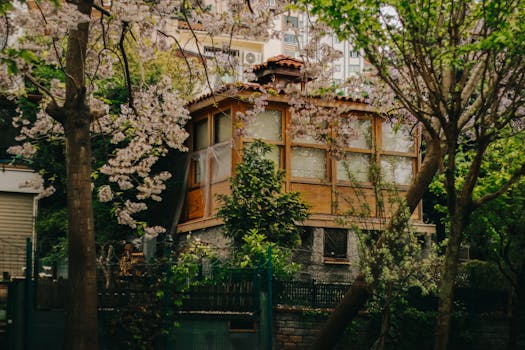
Urban Green Spaces: The Future of Outdoor Living in European Cities by 2025
Urban Green Spaces are becoming increasingly important in European cities as they provide a sustainable and healthy environment for citizens. By 2025, these spaces will play a crucial role in transforming the future of outdoor living. Urban Green Spaces are no longer just a luxury, but a necessity for the well-being of urban populations.
Introduction to Urban Green Spaces
Urban Green Spaces refer to parks, gardens, and other green areas in urban environments that provide a range of benefits, including air purification, noise reduction, and climate regulation. These spaces also offer opportunities for recreation, socialization, and relaxation, making them an essential component of urban planning.
Benefits of Urban Green Spaces
The benefits of Urban Green Spaces are numerous and well-documented. Some of the most significant advantages include:
- Improved air quality: Urban Green Spaces can help reduce air pollution by absorbing pollutants and producing oxygen.
- Enhanced mental health: Spending time in nature has been shown to reduce stress, anxiety, and depression.
- Increased physical activity: Urban Green Spaces provide opportunities for outdoor recreation, such as walking, cycling, and sports.
- Climate regulation: Green spaces can help mitigate the urban heat island effect, reducing the temperature in cities.
Examples of Urban Green Spaces in European Cities
Many European cities are investing in Urban Green Spaces, with some notable examples including:
- London’s Hyde Park: One of the largest urban parks in Europe, offering a range of recreational activities and events.
- Paris’s Luxembourg Gardens: A beautiful and historic garden, providing a peaceful escape from the city.
- Berlin’s Tiergarten: A large urban park, featuring several lakes, gardens, and walking trails.
Challenges and Opportunities for Urban Green Spaces
Despite the many benefits of Urban Green Spaces, there are also challenges and opportunities to consider:
- Urbanization: The increasing demand for housing and infrastructure can lead to the destruction of green spaces.
- Climate change: Rising temperatures and changing weather patterns can impact the health and resilience of urban ecosystems.
- Community engagement: Involving local communities in the planning and maintenance of Urban Green Spaces can help ensure their long-term sustainability.
Conclusion
In conclusion, Urban Green Spaces are a vital component of European cities, providing numerous benefits for the environment, health, and well-being of citizens. As we look to the future, it is essential that we prioritize the creation, maintenance, and protection of these spaces, ensuring that they continue to thrive and support the needs of urban populations by 2025.





